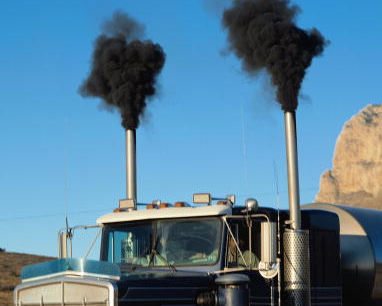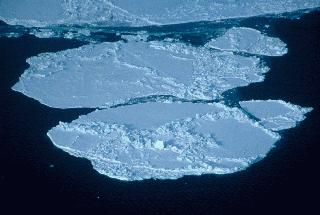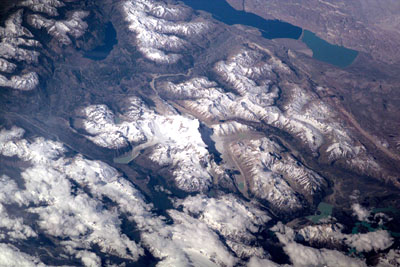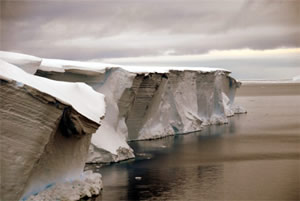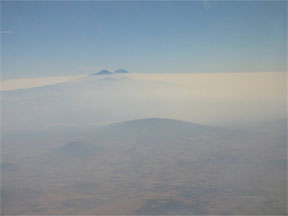Click on image for full size
Courtesy of U.S. Environmental Protection Agency
Black Carbon
The burning of fossil fuels like coal, gas and oil releases particles into the atmosphere. When fossil fuels are not burned completely, they produce black carbon -- otherwise known as soot. Soot looks like a black or brown powder and though it's made up of tiny particles, it can have a big impact on climate.
Black carbon stays in the atmosphere for several days to weeks and then settles out onto the ground. It can be produced from natural causes like when lightning causes a forest fire. Most black carbon results from human practices like slash and burn methods for clearing land, using diesel engines, and industrial processes that burn coal, gas and oil, and coal burning in homes. Black carbon is produced around the world and the type of soot produced varies by region.
Black carbon adds to global warming in two ways. First, when soot enters the atmosphere, it absorbs sunlight and generates heat, warming the air. Second, when soot settles on snow and ice, it makes the surface darker, so the surface absorbs more sunlight and generates heat. This warming causes more snow and ice to melt, in what can be a vicious cycle.
Black carbon lowers the albedo of a surface. Scientists use the term "albedo" as an indicator of the amount of energy reflected by a surface. Albedo is measured on a scale from zero to one (or sometimes as a percent).
- Very dark colors have an albedo close to zero (or close to 0%).
- Very light colors have an albedo close to one (or close to 100%).
Soot is dark in color, and so has a low albedo and reflects only a small fraction of the Sun's energy. Forests have low albedo, near 0.15. Snow and ice, on the other hand, are very light in color. They have very high albedo, as high as 0.8 or 0.9, so they reflect most of the solar energy that gets to them, absorbing very little. The more dark surfaces on Earth, the less solar energy is reflected and this means more warming as more solar radiation is absorbed. Soot makes surfaces (or the atmosphere) darker and so adds to global warming.
Scientists say that black carbon emissions are the second largest factor in global warming, after carbon dioxide. Reducing black carbon is one of the fastest ways for slowing global warming. Luckily, many policies have been put in place to lessen black carbon around the world, and the technology needed to lessen black carbon already exists. The importance of black carbon's role in global warming has come to the forefront of the minds of many concerned citizens and exciting steps are already being taken to address issues like making cleaner burning cookstoves available in developing nations and improving industrial practices that produce black carbon. Reducing black carbon around the world will not only lessen global warming, but will cut down on air pollution and will improve human health.


